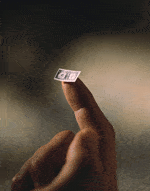United States

|
Some who saw the announcement were so shocked by the number that they thought it was a misprint when the US treasury reported the results of indirect bidding at a $9 billion auction of reopened 10-year government bonds on September 9.
Indirect bidders, who are a proxy for foreign central banks, purchased only 2.8% of the total. This paled in comparison with the foreign participation rates of 38% and 54% in the two previous 10-year bond auctions.
Dealers were hard-pressed to explain the lack of foreign demand, and some analysts said it could have been an aberration. Nonetheless, it raised a warning flag about financing the gaping US current-account deficit, which has reached 5% of gross domestic product.
The dollar slumped on the very afternoon of the treasury bond auction, following unusual comments on the greenback from a Federal Reserve official. Janet Yellen, a former Fed governor and current president of the Federal Reserve Bank of San Francisco, said the US trade deficit would continue to widen as long as the dollar held at current levels and that the only way to redress the situation must involve the dollar.
Meanwhile, the dismal foreign participation in the treasury auction may raise worries about the sustainability of that demand, says Ashraf Laidi, chief currency analyst at New York-based MG Financial Group. The lack of bidding could imply that foreign central banks have concluded that the US bond market has peaked following its recent strong rally, Laidi notes. Everybody knows that yields are going up, he says.
The US trade deficit narrowed to $50.1 billion in July but still was the second highest on record. If the dollar is likely to weaken and bond prices to fall, foreign buying of US debt securities could face strong headwinds.
Gordon Platt



